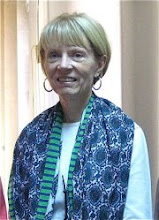Ile des Oiseaux (Island of Birds)
 An imitation pirate vessel leaves the port at Houmt Souk for a nearby island. Aboard, I watch the bow turn toward the channel, looking out at the cormorants and gulls perched on the buoys marking the conduit. Given the current appeal of the port area, which is ringed by outsized, sienna-toned rocks, stacks of amphorae (earthen pots used for fishing), and piles of fishing nets, I would never guess that Dragon, the pirate, had piled the skulls of 6,000 of his victims in a pyramidal tour near the present fort as a warning to any future aggressors. The Ghazi Mustapha Fort is positioned on the town’s shoreline next to the port.
An imitation pirate vessel leaves the port at Houmt Souk for a nearby island. Aboard, I watch the bow turn toward the channel, looking out at the cormorants and gulls perched on the buoys marking the conduit. Given the current appeal of the port area, which is ringed by outsized, sienna-toned rocks, stacks of amphorae (earthen pots used for fishing), and piles of fishing nets, I would never guess that Dragon, the pirate, had piled the skulls of 6,000 of his victims in a pyramidal tour near the present fort as a warning to any future aggressors. The Ghazi Mustapha Fort is positioned on the town’s shoreline next to the port.Flamingos are visible only in October through April; the weather is too hot in the summer. Of the birds in Djerba’s waters, gulls, herons, pelicans, cranes, and cormorants are still more observable than flamingos in early December. However, there are some. Off the island, I observed only two. They didn’t appear to mind people approaching, simply ambling farther offshore on their tall, thin legs. Long neck and legs, downward-curving bill, pinkish-white feathers with black wing quills, I find it extraordinary they can wade and feed with such symmetry and poise.
Bird Island is small and desolate, covered with dunes, scrub, and washed up algae; a resolute wind blows persistently across the landscape. Sand bars, shallow waters, and seaweed marsh surround the islet. A rising sea level is encroaching on the atoll’s terrain year by year. A person stranded on this isolated mass of land would have nothing but him/herself for distraction. Small seashells and rocks, mounds of sand shifting with the winds, masses of desiccated seaweed left behind by the receding tide, this is all that exists. Except nowadays, boatloads of tourists show up in pirate ships with blaring music, ready to take lunch in the blanched-wood huts, and listen to comic skits for an afternoon’s entertainment. Pictures taken with Captain Crochet (Captain Hook) also become available for purchase.
The lunch was delicious. Oysters (huitres) picked straight from the sea, like secretive presents opened before their time, then eaten from the half shell with lemon juice squeezed from a chunk. Brik (deep fried cheese and spinach enveloped in light, ultra thin pastry), small fishes cooked on a grill, piquant couscous with steamed tomatoes and zucchini on top, Tunisian salad (chopped cucumbers, tomatoes, and onion), chunks of French bread, and tangerines for dessert. After a walk to see the flamingos, tea was served.
It wasn’t what I expected. Still, apart from the unabashed tourist approach of the voyage, I did enjoy the experience, or at least parts of it. The event was a trip in the open air, a “sort of” journey into nature. I saw some birds and identified them as best I could. I thought there might be more. I learned about the physical features around Djerba and had a view of Houmt Souk from offshore I definitely saw some different terrain. I couldn’t feel like a Robinson Crusoe, since I think he had tropical vegetation on his island and eventually one person, Friday. Lots of people were here looking for a chance to escape, and not into solitude.
Finally, it was time to return to Houmt Souk. A couple of amphorae attached to fish net were retrieved on the return trip. No catch was made; they were empty. Seeing the fort emerge, as the town’s dominant feature on the coastline, was intriguing. Fortunately, memories of Dragon’s tower are precisely that, memories. Only a commemorative obelisk, dating from 1848, exists at present. Derba is often presented as “Derba la douce (sweet or mild).” Considerations of that are what capture my thoughts at the moment.


0 Comments:
Post a Comment
<< Home